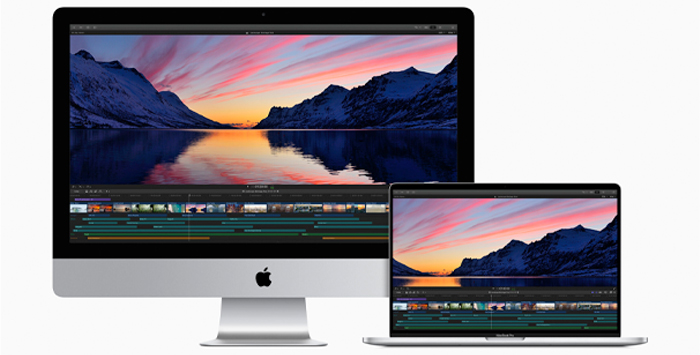
Final Cut Pro is a great piece of video editing software, and when it comes to audio recording and editing it certainly has some chops. However, audio signals can be a confusing landscape to navigate.
In the world of digital music and audio, there is a bewildering array of different audio file formats, encoding rates, bit rate, sample rate, bit depth, and a whole host of technical details. It can be easy to get lost in a sea of abbreviations and specifications.
However, the three audio file formats with higher quality which are most commonly used are AIFF, WAV, and MP3, all of which Final Cut Pro can use. There are some important things to understand about each audio format before you decide which is going to best suit your needs.
Main Differences Between AIFF, WAV, and MP3

The AIFF and WAV audio formats employ the same type of encoding that results in large files that require more storage space. Though AIFF and WAV play on almost all computers and devices, WAV is for Windows PCs, while AIFF works mostly for Mac and iOS devices. The main differences? WAV files have better sound quality compared to MP3 files, M4V audio formats, or other lossy formats.
The main differences between these three file types are listed in the table below.
| AIFF | WAV | MP3 | |
| Actual Name | Audio Interchange File Format | Waveform Audio File Format | MPEG Audio Layer-3 |
| Developer | Apple | Microsoft/IBM | Fraunhofer Society |
| Year of Release | 1998 | 1991 | 1991 |
| File Extension | .aiff, .aif | .wav | .mp3 |
| Lossless / Lossey | Lossless | Lossless | Lossy |
| File Size | Very small | Large | Small |
| Best For | Apple users | Professionals | Everyone |
| Supported Players | iTunes/Apple Music, VLC, | Windows Media Player, VLC | Almost all music playback software |
| Restrictions | No | Restricted to 4Gb file size | No |
Audio Files and Formats
AIFF
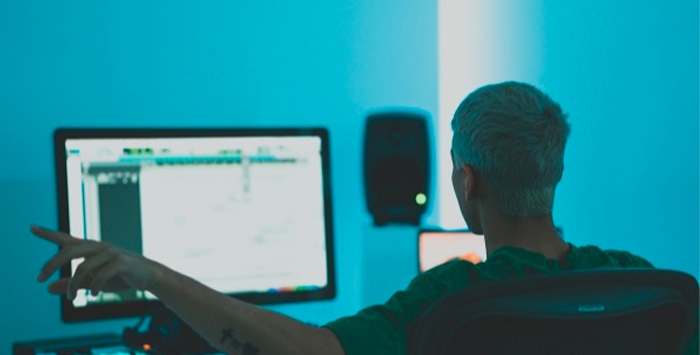
AIFF (Audio Interchange File Format) was introduced by Apple in 1998. Of the three file formats, that makes it the most recent.
As you would expect for a format developed by Apple, AIFF was designed to work on Macs and iOS devices. That means iTunes, and later Apple Music, were the ideal way to listen to this digital audio format. The AIFF audio format also works perfectly with other apps on Mac, such as Final Cut Pro, so it’s not just restricted to Apple’s own software.
However, most media players will accept AIFF files, and Windows Media Player can cope with the audio format so Windows users can use it as well. With Windows (and Android devices) you will need some kind of third-party players that support AIFF files, whereas, on a Mac or iOS device, AIFF files can be played natively.
AIFF is a lossless audio format, which is to say that there is no loss in quality when an audio file is encoded in the AIFF format. It produces uncompressed audio files. This means that the audio quality is very high, which makes AIFF suitable for anyone looking for a broadcast or studio-quality audio format.
Sample rates and bit depth options are very high with AIFF, which is what allows it to produce such high-quality audio files. This gives you flexibility when it comes to choosing audio quality and what the final audio will sound like.
There is a downside to all that audio quality though — the file size for original audio data in AIFF is considerably larger than it is for formats such as MP3. Around one minute of audio recording can take up to about 10Mb of storage space in the original audio.
AIFF File Sharing
This makes it a less practical format when it comes to sharing files and disk space. If you are posting video content to sites such as YouTube or TikTok, you want audio formats with smaller file sizes and as practical as possible, meaning it might not be an ideal audio format for those sites either.
There is a compressed version of AIFF, which is known as AIFF-C. This takes up less hard drive space than a regular uncompressed audio AIFF file and comes with a slightly different file extension, .aiffc.
There is no quality difference between both AIFF audio formats, though AIFF-C may not be playable on older media players. Up-to-date media players should have no problem with native support.
Another issue with AIFF is its file header and metadata support, so tagging files isn’t as well-handled as it is with other formats. This can be a problem if you have a large number of files that need to be organized and searched for easily.
Despite this limitation, however, the sound quality of AIFF really is excellent and if it’s higher quality you need, especially if you are an Apple user, then it’s a great choice.
WAV

The WAV file format, which stands for Waveform Audio File format, is older than AIFF and was developed in 1991 by Microsoft and IBM. Despite its age, WAV is venerable and one of the highest quality audio formats that is still in use today.
Like AIFF, WAV is a lossless format that produces uncompressed audio, so when you encode music with WAV format, there is no compression or loss of quality. Analog audio data is taken, converted into binary data your computer can understand, and stored as a bitstream. This is the same technique that AIFF uses as well. This very high quality means it is ideal for anyone working professionally with audio content since the quality of sound can be guaranteed.
The WAV file format was developed for use on PCs, and the data is raw and produces uncompressed audio. The development for PCs makes it ideal to use WAV sounds with Windows, though the WAV format is so common now that pretty much all platforms and playback devices can play it, including Macs.
Alongside Windows Media Player and iTunes/Apple Music, VLC Player can also easily play back WAV files. It's a great cross-platform user-friendly media player that runs on macOS, Windows, Android, and Linux - so playing back WAV files is easy anywhere.
The bit rate and sample rate for WAV are extremely high and produce CD-quality sound, though WAV files are not what is actually burned on audio CDs — they just use the same encoding, which is known as Linear Pulse Code Modulation (LCPM). WAV also has a very high dynamic range of up to 192Khz, which ensures high quality audio.
One of the advantages of WAV files is that they are great for editing and manipulating. This can make this format a good choice for a video project and works well for DJs, mash-up makers, or anyone interested in playing around with digital audio. WAV files are simple and that simplicity is what makes them so ideal for editing and working with.
The WAV file format has the same problem as AIFF though, which is large file sizes. Because WAV is uncompressed audio, the resulting files require more space on your computer depending on how much audio you are dealing with. File sizes between AIFF and WAV are likely to be very similar since they both work in the same way and are lossless audio formats with higher sound quality.
WAV File Sharing
The large file size associated with WAVs also means that WAV files aren’t ideal for sharing online, and you will need a good-sized hard drive if you are going to have a lot of them to work with or edit.
Another possible downside is that, because the files are so easy to edit and play around with, it can become easy to corrupt the file, so it’s always worth ensuring you have a backup saved and that you regularly save your work while editing the sound file to avoid any potential problems.
WAV files are a venerable format, but the sound quality and familiarity of the format means there’s plenty of life in the old dog yet, and WAVs continue to be a great choice for high-quality, lossless audio.
MP3

There is likely no more familiar audio file format in the world than MP3s. Developed in 1991, the same year as WAV files, the MP3 solves WAVs biggest drawback — file sizes.
MP3 produces compressed audio files, so it's a lossy format. That means that to get smaller files, the audio signal is compressed. In theory, MP3 compression is meant to take audio data that is beyond the range of human hearing and cut it out of the signal to use less disk space.
Getting rid of that data means there is less audio data to save. In practice, it doesn’t quite work like that, and the compression can result in other audio data being removed and audio quality loss.
This means that there is a loss of audio quality, unlike AIFF, WAV, FLAC files and other uncompressed formats but the resultant file size is much, much smaller. That makes the files extremely practical and MP3 files are around one-tenth the size of WAV or AIFF files. The cost of that practicality is quality — there’s no doubt that the audio quality of MP3 is far below that of either WAV or AIFF.
MP3 File Sharing
Flexibility is the main gain, and that's the reason that MP3 has established itself as the format that everyone uses when it comes to music portability and audio content. The quality might not be as high, but the benefits when it comes to sharing files, reducing storage size, and being able to swap files are immense. Audiophiles will be able to hear the difference between MP3 digital content and the other two formats, but for the vast majority of people, the sound quality is good enough not to worry about the loss of quality between different audio formats.
When it comes to Final Cut Pro, MP3 is your best bet to use as an audio format when you need to keep a smaller file and are dealing with audio such as dialogue or a music track. MP3 stores data using less space compared to lossless formats.
MP3 DRAWBACK
However, one drawback of the MP3 compression algorithm is that there’s always a short, silent gap at the end of any MP3 file of around 10 to 50 microseconds (ms).
This might not sound like much. However, it makes a real difference if you want to loop a file or have several tracks that blend into each other (for example, the “Long Medley” at the end of The Beatles Abbey Road) because it means there’s always a short blip between tracks.
Despite the loss of quality, MP3 remains the preferred format, even in the age of streaming. There really is no audio format that even comes close to it in terms of popularity and better support. With MP3 you will never run into compatibility issues like with other formats.
How to Choose the Right Format?
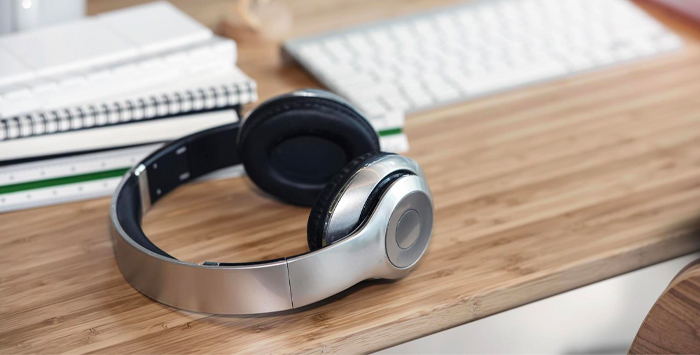
When it comes to AIFF vs WAV and other audio file formats, including compressed formats like MP3, choosing the right audio format is a balancing act. You need to take into account several factors that will vary from project to project, from file to file, and personal preference.
For example, if you have a Final Cut Pro video file that utilizes a lot of voiceovers but little other audio you might find that MP3 even with quality loss is the best option to choose.
When it comes to dialogue or the spoken word, the difference between a lossy and lossless format is extremely hard to hear, and MP3 audio files are almost always the standard audio format for this kind of sound file.
If you are doing a lot of work with music, the choice might be harder. AIFF and WAV, where the quality is almost exactly the same, will provide fantastic-sounding audio files but those files are going to be very large.
This could be a problem if you are posting to social media sites, which may limit how big an overall file can be. On the other hand, if you are keeping your files locally the size of the file may not matter so using WAV and AIFF files would be fine for better quality.
In the end, it will be a judgment call. Experimenting with different settings and different file types will give you the chance to decide what will best suit your needs.
Conclusion
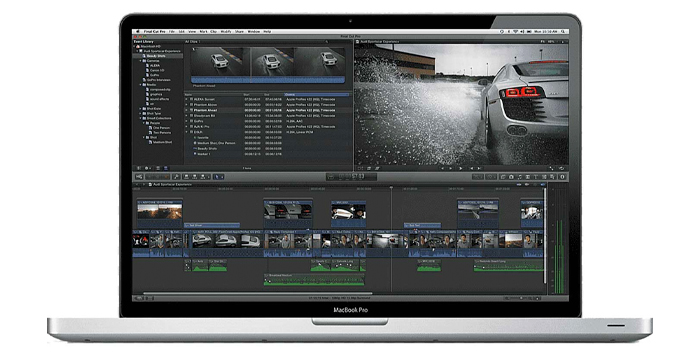
With AIFF vs WAV, you have widely supported uncompressed audio files. MP3, WAV, and AIFF all have different features and reasons to be used in your Final Cut Pro projects. Understanding how these audio formats work and the differences between them will let you make an informed decision on which to use.
And now you have all that information at your fingertips, all you need to do is make your choice between AIFF vs WAV formats and other audio formats like MP3 or AAC and produce some great-sounding audio.
FAQ
Can an iPhone Play AIFF?
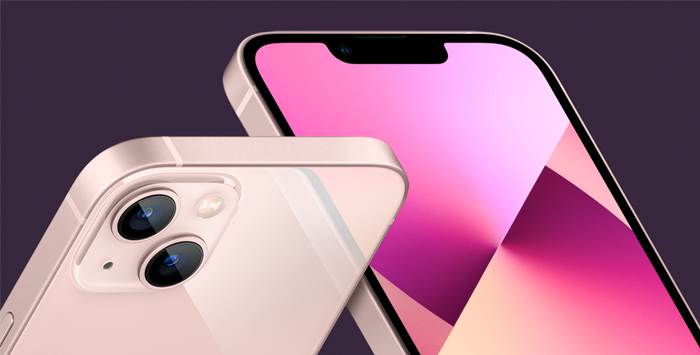
The simple answer is yes, iPhones are able to play any AIFF audio file. AIFF was developed by Apple so all Apple devices, including the iPhone, iPad, and Mac computers, can support and play AIFF files natively.











